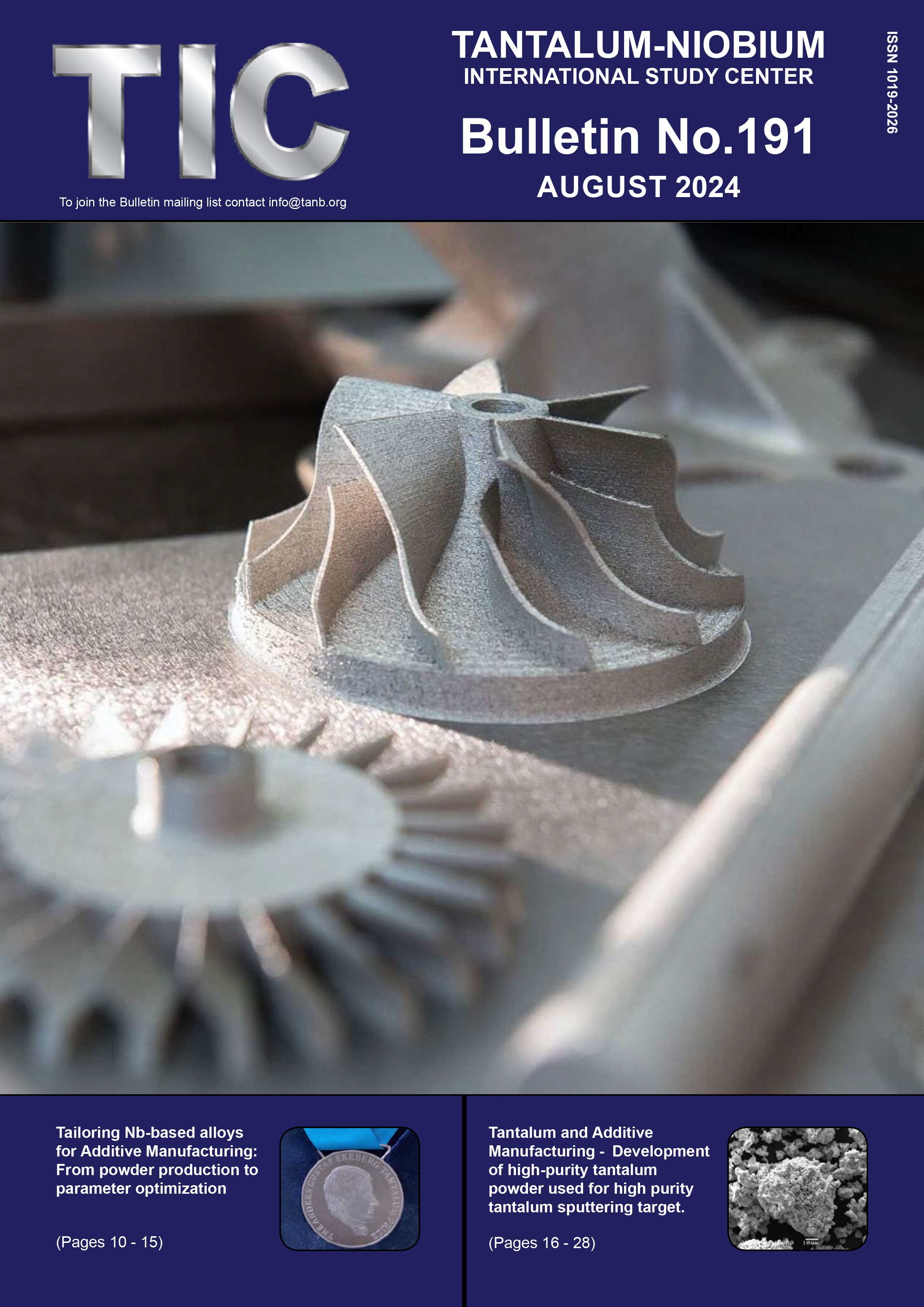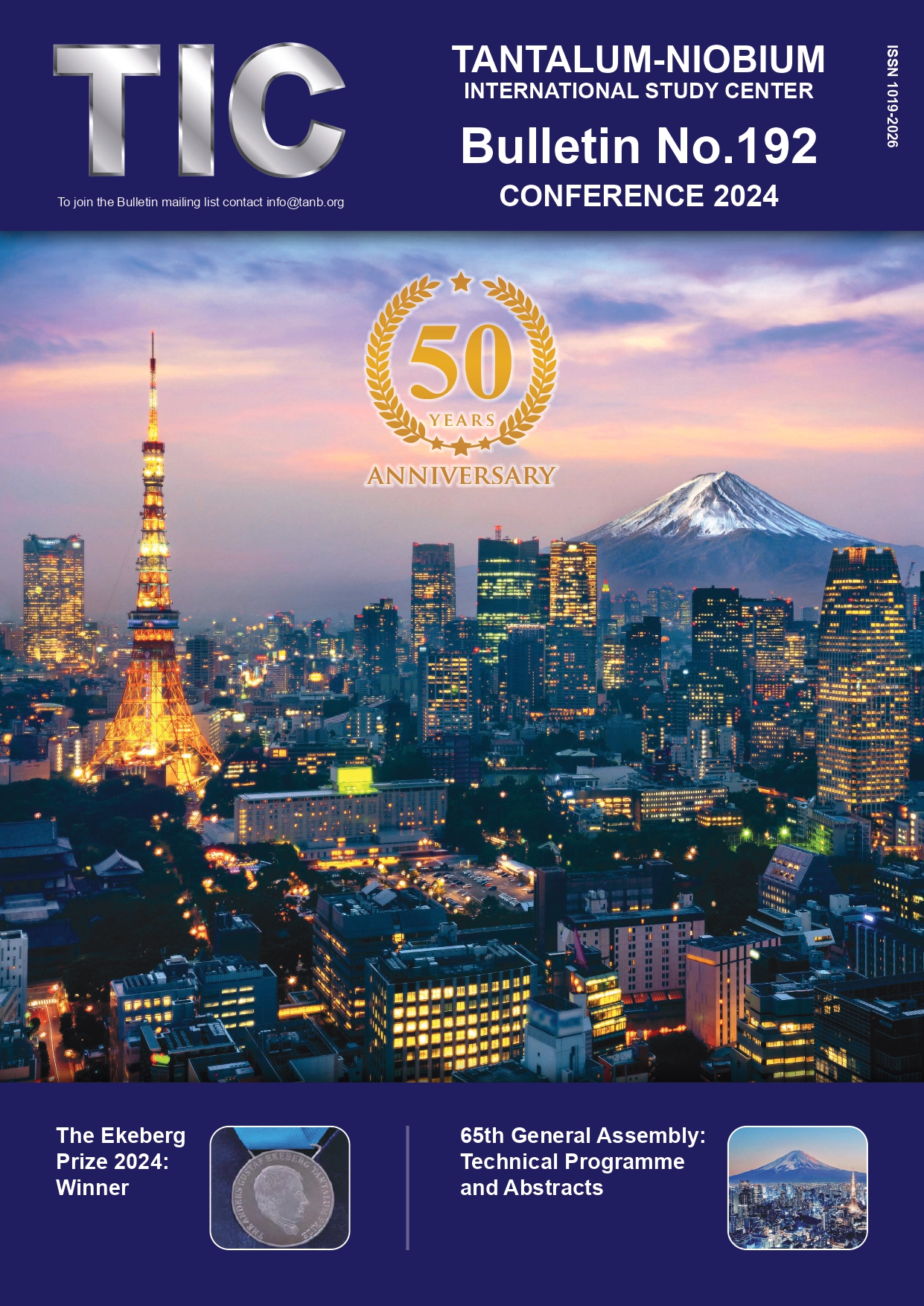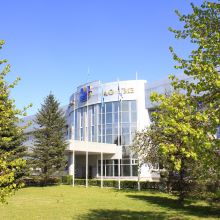Responsible sourcing: supply chain due diligence
"Supply Chain" refers to everything related to responsible sourcing of tantalum minerals, including the application of due diligence, in particular when sourcing from conflict-affected or high-risk areas.
Introduction – a overview of supply chain
The T.I.C.’s work on what we call the “supply chain”, includes a number of sub-topics:
- Responsible Sourcing – the implementation of due diligence in sourcing minerals, so as to prevent any potential conflict minerals from entering the supply chain.
- Artisanal and Small-scale Mining (ASM) – addressing the issues particular to mining at the artisanal level, including occupational safety, training, environmental protection etc.
The application of due diligence is required of all T.I.C. members, as described in the association’s “Artisanal and Small Scale Mining Code of Conduct” that was approved by the T.I.C. membership during the Fifty-seventh General Assembly held in Toulouse, France, in October 2016. This document evolved from the 2009 ASM Policy. In 2009 there was little consensus on how, or if, companies could ethically source material from ASM sources. Due to the importance of ASM to our membership, and to our industry, the T.I.C. produced the ASM Policy as an early form of guidance into the ethical procurement of material from artisanal sources. The situation today is very different from 2009. Today, many laws address issues involved in mineral sourcing. In addition to laws, there are a range of regulations applying to ore procurement, depending on the communities that participate in the sourcing, purchasing or consuming supply chain.
The 2009 Policy and the 2016 Code of Conduct support the view that disengagement is not the answer, and that instead the solution lies in a comprehensive approach that requires members to work to a code of full, documented and audited traceability and transparency throughout the supply chain. This view is supported by the recommendations of the report issued by the U.N. Panel of Experts in 2008, as well as a number of Non-Governmental Organisations (NGOs). The T.I.C. condemns any activities that have the effect of routing mineral revenues to United Nations sanctioned groups; the Policy therefore accepts the requirement to identify ‘legitimate’ mines, and the need to work with the host Governments to improve governance that will ensure artisanal mining can be performed in conditions of freedom, equality, safety and human dignity.
Tantalite and tantalum
Tantalite is the mineral or ore, and tantalum is the metallic element which can be extracted by chemically processing the ore. Technically, tantalum minerals do not undergo “smelting”, although for convenience, this chemical processing is often referred to as smelting in the broader context of 3TG minerals.
The main supply of the world's industrially mined tantalum minerals comes from Brazil, while tantalum minerals are also industrially mined or obtained as by-products from industrial mining in Australia, China, Ethiopia, France, Mozambique and Russia, whereas artisanal scale mining or semi-mechanised mining produces tantalum minerals in Burundi, the DRC, Nigeria, Rwanda and other countries in Africa and South America. Tantalum is also obtained as a by-product of tin smelting operations in Malaysia and Thailand.
Tantalum raw materials also occur in many other countries, such as Bolivia, Canada, Central African Republic, Colombia, Egypt, Eritrea, Finland, Namibia, Republic of Congo, Saudi Arabia, Sierra Leone, Somaliland, South Africa, Spain, USA, Venezuela and Zimbabwe, to name but a few. The level of production in these countries varies from undeveloped deposits through to active artisanal mining and inactive former industrial mines.
Photo of tantalite from Artisanal Scale Mining (Karen Hayes)
Who’s Who
An alphabetically ordered glossary of subjects and stakeholders from the world of responsible sourcing.
3TG: Tantalum, tin, tungsten and gold.
An acronym representing the so-called three ‘T’s tantalum, tin and tungsten, as well as gold. In the context of responsible sourcing, these four minerals are often also referred to as “conflict minerals”, due to being specifically defined as such in the Dodd-Frank Act, and the perceived potential for their extraction having benefited non-state armed groups, particularly in but not limited to central Africa.
BGR: Bundesanstalt für Geowissenschaften und Rohstoffe
The German Federal Institute for Geosciences and Natural Resources, BGR, supports resource rich developing countries (e.g. Democratic Republic of Congo, Rwanda, Burundi) in improving management of the mining sector, by strengthening mining authorities to develop their mining inspectorate as well as in implementing international standards on health, safety and environment in mining.
Burundi
One of the twelve member states of the ICGLR, bordered by Tanzania, the DRC and Rwanda. As a comparison, it has the same size and population of Belgium. The country is a producer of 3TG minerals, and the ITSCI programme has been operating in Burundi since April 2014.
CBRMT: Capacity Building for a Responsible Minerals Trade
An initiative of the U.S. Agency for International Development (USAID), the CBRMT aim is to strengthen the capacity of national and regional actors in the conflict-free minerals supply chain. The project is being implemented by Tetra Tech, a provider of i.a. consulting, program management, and technical services.
CCCMC: China Chamber of Commerce of Metals Minerals & Chemicals Importers & Exporters
The CCCMC is a subordinate unit of the Ministry of Commerce of China with a membership of more than 5'700. One of its major functions is to coordinate and instruct the import and export activities of members according to the constitution, laws and administrative regulations. The CCCMC developed the Chinese due diligence guidelines for responsible mineral supply chains, aimed at ensuring Chinese companies can identify and mitigate risks of them contributing to conflict, serious human rights abuses and misconduct around the world, in association with Chinese and international partners including Global Witness and the OECD. Further information can be found here.
Coltan: Columbo-tantalite
A colloquial short-hand first employed in central Africa, which abbreviates the more technical name “columbo-tantalite” for the mineral series from which most tantalum is obtained. The generic formula for columbo-tantalite is [Fe,Mn][Nb,Ta]2O5 where the ratio of iron (Fe) to manganese (Mn), and of niobium (Nb) to tantalum (Ta), are variable. Minerals containing mainly niobium (formerly known as columbium) are more correctly described as columbite; minerals containing mainly tantalum are more correctly described as tantalite.
Tantalite/coltan from central Africa is only one of many sources of tantalum. Note that other mineral species containing tantalum, such as microlite or struverite, should never be described as coltan. Further information is available in a separate document on the sources of tantalum minerals.
Regardless of what name is used for tantalum minerals, the T.I.C. requires its members to source minerals responsibly in accordance with the T.I.C.'s Policy on Artisanal Scale Mining. See also Responsible Sourcing below.
Conflict minerals
Any minerals which have been found to have generated revenue for non-state armed groups and/or have their extraction associated with human rights abuses. See also Responsible Sourcing below.
DDG: OECD Due Diligence Guidance for Responsible Supply Chains of Minerals from Conflict-Affected and High-Risk Areas
The Due Diligence Guidelines developed by the OECD in consultation with a broad range of stakeholders including the T.I.C., and first published in 2010. A second edition was published in 2012. The DDG are applicable to any metal or mineral anywhere in the world, although there are commodity specific annexes for the 3Ts and for gold.
The OECD DDG are seen as the ‘gold standard’ or leading practice, which all other guidelines and regulations related to conflict minerals and responsible sourcing are based on. Quoting from the DDG Foreword: “The OECD Due Diligence Guidance for Responsible Supply Chains of Minerals from Conflict-Affected and High-Risk Areas (“the Guidance”) is the first example of a collaborative government-backed multi-stakeholder initiative on responsible supply chain management of minerals from conflict-affected areas. Its objective is to help companies respect human rights and avoid contributing to conflict through their mineral sourcing practices. The Guidance is also intended to cultivate transparent mineral supply chains and sustainable corporate engagement in the mineral sector with a view to enabling countries to benefit from their mineral resources and preventing the extraction and trade of minerals from becoming a source of conflict, human rights abuses, and insecurity. With its Supplements on Tin, Tantalum, Tungsten and Gold, the OECD Guidance provides companies with a complete package to source minerals responsibly in order for trade in those minerals to support peace and development and not conflict.”
DFA: Dodd-Frank Wall Street Reform and Consumer Protection Act, 2010 (of the USA)
This legislation calls upon U.S. companies to ensure that the products they manufacture do not contain minerals that directly or indirectly finance or benefit armed groups in the DRC or adjoining countries. It states that “[parties must] disclose annually whether any of those minerals originated in the Democratic Republic of the Congo or an adjoining country. If an issuer’s conflict minerals originated in those countries, Section 13(p) requires the issuer to submit a report to the Commission that includes a description of the measures it took to exercise due diligence on the conflict minerals’ source and chain of custody.”
“Conflict minerals”: columbite-tantalite (coltan), cassiterite, gold, wolframite, or their derivatives.
DRC and any “adjoining country” together are called the Covered Countries: DRC, Angola, Burundi, Central African Republic, the Republic of the Congo, Rwanda, South Sudan, Tanzania, Uganda, and Zambia.
Dodd-Frank legislation was applied by the US Securities and Exchange Commission to all issuers of stock in the United States where gold, tin, tantalum or tungsten (“3TG”) were used, manufactured or implicated. Companies are required to perform a reasonable "country of origin" inquiry to determine whether their products use 3TG minerals that originate from the Covered Countries.
DRC: Democratic Republic of the Congo
The largest member country of the ICGLR by size and population, where most of the 3TG minerals in the ICGLR countries are produced. As a comparison, it has the same population as Germany but has 6.5 times the area. Given the size of the country, activities by industry, research institutes and international civil society are often province specific, with most activities taking place in Katanga (now sub-divided into four new provinces: Haut-Katanga; Haut-Lomami; Lualaba; Tanganika), North and South Kivu, Maniema, and Orientale.
The ITSCI programme set up a pilot project in each of North Kivu and South Kivu in 2010, and these were followed by a rollout in Katanga province in January 2011. The programme is currently operational in the provinces of Katanga, North and South Kivu, and Maniema.
EICC (Electronic Industry Citizenship Coalition)
The EICC was founded in 2004 as a non-profit coalition of electronics companies. It has a ‘Code of Conduct’ for members to follow and its stated mission is to enable and encourage members to progress towards the EICC vision through the common code of conduct, collaborative efforts and shared tools and practices. The EICC worked closely with GeSI and in 2008 jointly established the Conflict-Free Sourcing Initiative (CFSI), later renamed Responsible Minerals Initiative (RMI).
European Conflict Minerals Regulation
In 2013 the European Commission proposed a draft regulation setting up an EU system of self-certification for importers of tin, tantalum, tungsten and gold (“3TG”) who choose to import responsibly into the EU. Self-certification requires EU importers of these metals and their ores to exercise 'due diligence' – i.e. to avoid causing harm on the ground – by monitoring and administering their purchases and sales in line with the five steps of the OECD Due Diligence Guidance.
The definition of 'conflict-affected and high-risk areas' covers those in a state of armed conflict, with widespread violence, the collapse of civil infrastructure, fragile post-conflict areas and areas of weak or non-existent governance and security, characterised by "widespread and systematic violations of human rights" (see the OECD due diligence guidance). The compliance burden is at the point of importation and unlike Dodd-Frank legislation it does not filter through the entire manufacturing and retail process.
In May 2015 politicians in the European Parliament (MEPs) voted to tighten the proposed law and counter-proposed that all EU importers of 3TG may need to be certified by the EU and provide information on the steps they take to identify and address risks in their supply chains for the minerals and metals concerned. The T.I.C. will continue to monitor this development.
GeSI: Global e-Sustainability Initiative
GeSI is an association of information and communication technology (ICT) organisations. Its mission involves “improving energy and resource efficiency, reducing carbon emissions and footprints, ensuring sustainable practices in the supply chain, encouraging access to sustainable technologies, and supporting ICT-enabled transformation across all industries and sectors around the globe.” In 2005, the EICC and GeSI formed a strategic alliance to address common corporate responsibility supply chain issues in the global electronics sector (“efficiently and effectively improve social and environmental conditions throughout the electronics supply chain”). In 2008 they established CFSI, which was to be renamed RMI in 2017.
ICGLR: International Conference on the Great Lakes Region
ICGLR is an intergovernmental organisation of African countries in the African Great Lakes region. Member countries include Angola, Burundi, Central African Republic (CAR), Republic of the Congo (Congo-Brazzaville), Democratic Republic of the Congo (DRC or Congo-Kinshasa), Kenya, Rwanda, South Sudan, Sudan, Tanzania, Uganda, and Zambia. The ICGLR Executive Secretariat celebrated its inauguration in May 2007 at its headquarters in Bujumbura, Burundi.
International Tin Association Ltd
Formerly known as the International Tin Research Institute (ITRI), the International Tin Association Ltd is the association representing the tin industry worldwide, dedicated to supporting the tin industry and expanding tin use. Its membership includes the world's most important tin producers and smelters.
ITSCI: International Tin Supply Chain Initiative
The T.I.C. worked closely with the International Tin Association (then called ITRI) on creating a transparent and traceable supply chain, providing seed funding in 2010 for the pilot implementation of ITSCI and encouraging T.I.C. members to join the ITSCI programme. The T.I.C. provides a representative for the broader tantalum industry on the Governance Committee of the ITSCI programme.
ITSCI is a joint industry programme of traceability and due diligence designed to address concerns over 'conflict minerals' such as cassiterite, tantalite and wolframite from central Africa. The ITSCI system aims to meet the needs of companies wishing to maintain trade with responsible supply chain actors in the Democratic Republic of Congo (DRC) and adjoining countries, as well as to meet due diligence expectations of the international community in terms of guidance from the UN, OECD and national laws such as the Dodd-Frank Act in the USA. ITSCI aims to encourage progressive improvement in conflict mineral sectors as well as sustainable production and economic development in the longer term. A leaflet provides a general summary of the ITSCI Membership Programme.
The programme is currently operational in the DRC provinces of Katanga, North and South Kivu, and Maniema, as well as in Rwanda, Burundi and Uganda.

Map showing the location of ITSCI-registered mines (at February 2016)
MFA: Ministry of Foreign Affairs - Ministerie van Buitenlandse Zaken (MBZ)
The Ministry of Foreign Affairs of the Netherlands, is an active leader providing practical support for various responsible sourcing initiatives in the ICGLR countries.
MSG: Multi Stakeholder Group
See under OECD.
NGO: Non-Governmental Organisations, or Civil Society
These include a wide variety of organisations both big and small, from grass roots organisations campaigning locally with modest means, to slick international organisations spanning the globe, all with the common aim of speaking up for the weak, the oppressed and those with no voice, including the environment. In the context of mineral sourcing they can act as early warning systems, whistle-blowers, as well as two-way conduits for communicating developments that affect local communities. They are an essential element in the on-going multi-stakeholder debate and development of responsible sourcing.
OECD: Organization for Economic Cooperation and Development
The organisation which first gathered a broad spectrum of stakeholders in December 2009 to address the subject of conflict minerals, and which developed the first Due Diligence Guidelines that other regulatory initiatives make reference to. The OECD maintains an increasing number of initiatives in this field, including outreach workshops in various regions of the world, commissioning studies and reports by research bodies, organising the series of Multi-Stakeholder Forum meetings, and maintaining a cross-party Multi-Stakeholder Group which informs the discussion in between MSF meetings and helps in their planning.
OECD wrote the Due Diligence Guidance for Responsible Supply Chains of Minerals from Conflict-Affected and High-Risk Areas which is the most widely internationally recognised standard on this issue.
PPA: Public-Private Alliance [for Responsible Minerals Trade]
The PPA is a multi-sector and multi-stakeholder initiative to support supply chain solutions to conflict minerals challenges in the Democratic Republic of Congo (DRC) and the Great Lakes Region (GLR) of Central Africa. The PPA provides funding and coordination support to organisations working within the region to develop verifiable conflict-free supply chains; align due diligence programmes and practices; encourage responsible sourcing from the region; promote transparency; and bolster in-region civil society and governmental capacity.
Responsible Minerals Initiative (RMI) (formerly CFSI)
An association founded in 2008 by members of the Responsible Business Alliance (RBA) and the Global e-Sustainability Initiative (see GeSI), the RMI is a respected resource for companies from a range of industries addressing conflict minerals issues in their supply chains. It provides a range of tools and resources and a range of guidance documents on conflict minerals sourcing.
Rwanda
A key producer country of 3TG minerals in central Africa. By way of comparison, it is similar in size and population to its neighbour Burundi (and so also comparable to Belgium). Rwanda is a member of the International Conference on the Great Lakes Region (see 'ICGLR'). The ITSCI programme has been operational in Rwanda since January 2011.





